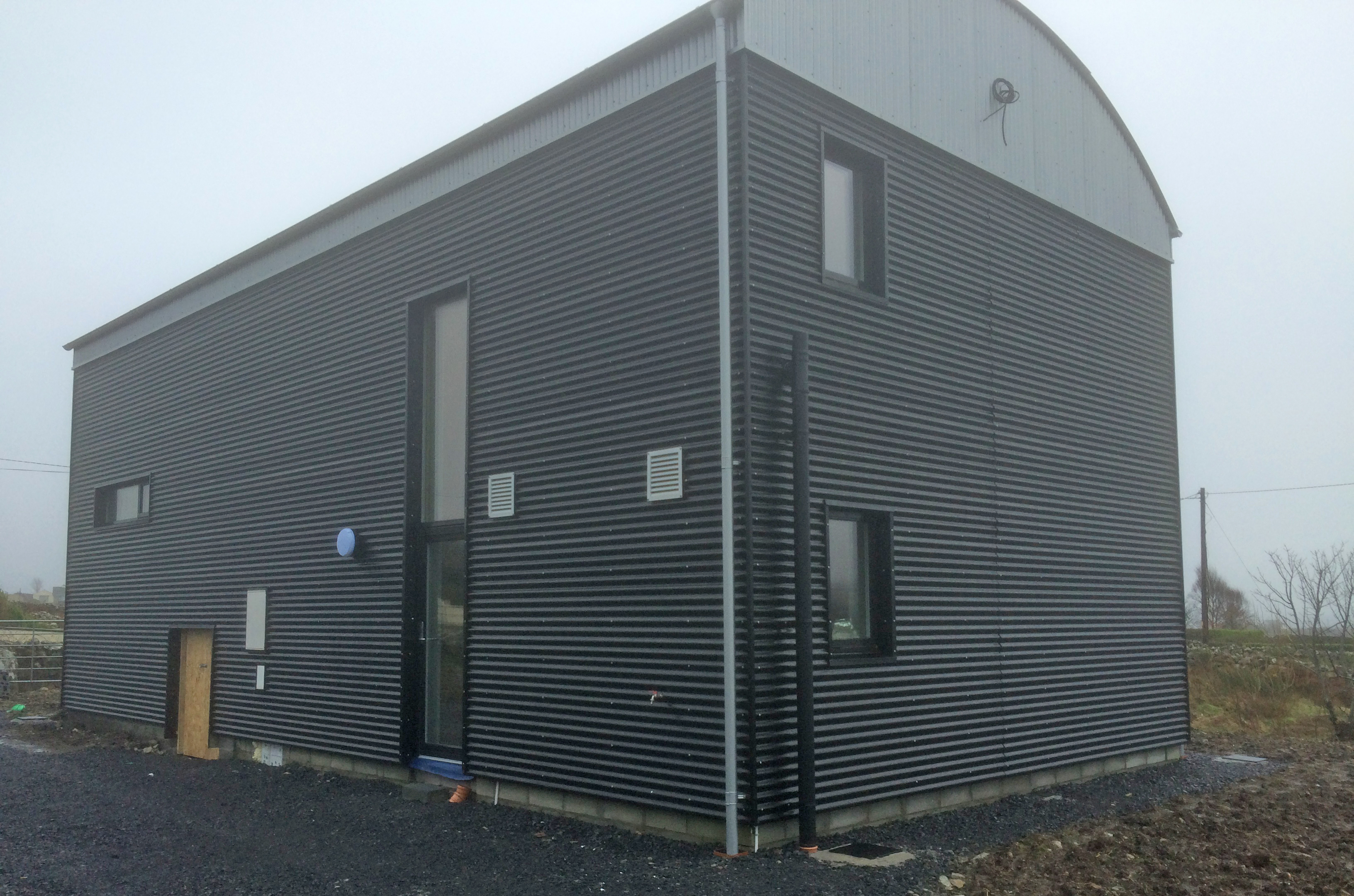The Low energy barn in Inverin, situated in County Galway, is a remarkable example of energy-efficient and sustainable construction. Designed by Lester Naughton, an RIAI architect, and built by GeenTec, led by Niall Dolan, this unique project emphasizes both environmental responsibility and cost-effectiveness in its architectural approach.
Key details of the Low Energy Barn in Inverin:
Energy efficiency focus: The central objective of this project is to achieve low energy consumption, making it an environmentally conscious and economically sound building.
Architectural design: The architectural design, overseen by Lester Naughton, demonstrates a commitment to integrating energy-efficient principles into the structure while ensuring an aesthetically pleasing appearance.
Innovative construction materials: The barn incorporates a range of innovative materials and features, including a cold bridge-free foundation system, timberframe wall and roof build-up, and airtightness levels below 0.6 air changes per hour (ACH). These aspects collectively contribute to the building's energy efficiency.
Triple glazed alu-clad windows: Energy-efficient triple-glazed windows with aluminum cladding have been incorporated into the design, enhancing insulation and preventing heat loss.
Corrugated metal exterior: Corrugated metal is utilized for both the external walls and roof of the barn. This material offers durability and weather resistance, ensuring the long-term sustainability of the structure.
Solar PV panels: A 1 kW solar photovoltaic (PV) panel system is installed on the roof, harnessing the power of the sun to generate renewable energy, further reducing the building's environmental footprint.
Wood burning stove: The inclusion of a wood-burning stove provides a renewable and efficient heat source, ensuring warmth and comfort while reducing reliance on traditional heating methods.
The Low Energy Barn in Inverin is an exemplary model of sustainable construction, where innovative materials and energy-efficient features work in harmony to minimize energy consumption and environmental impact. The use of the Nilan Compact P unit for heating and ventilation complements the overall goal of creating a high-performance, energy-efficient building, aligning with modern principles of sustainable living and responsible construction.


